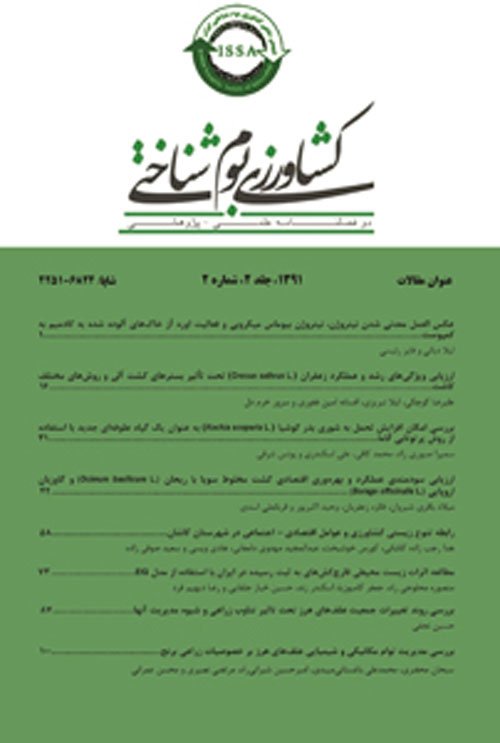Study on population indices and mapping of weeds in corn fields of Kermanshah province
Author(s):
Abstract:
Understanding how a weed community is affected by ecological، agronomic and management factors is one of the most effective ways to control and establish management programs for each crop. In order to conduct weed mapping and study the weed population indices of weeds in corn fields of Kermanshah Province، 48 corn fields in different cities based on planting area were selected for sampling during 2010. After sampling the weeds based on standard methods، the weed population indices based on equations were calculated. Using geographic coordinates of field and weed data، a map for each weed species using GIS was produced. To evaluate the similarity of different cities of the province for weed species diversity and evenness، the cluster analysis method was used. The results showed that the dominant broadleaf weed species of Kermanshah Province were redroot pigweed (Amarunthus retroflexus)، common lambsquarters (Chenopodium album)، field bindweed (Convolvulus arvensis)، Chinese lantern (Physalis alkekengi) and common purslane (Portulaca oleracea)، respectively. The dominant grass weeds of Kermanshah Province were green foxtail (Setaria viridis)، Johnson grass (Sorghum halepens) and barnyardgrass (Echinochloa crus-galli)، respectively. Phytosociological studies on weeds in corn fields showed that، according to the Shannon-Wiener diversity index، Kermanshah’s cities were grouped into three clusters. Comparisons performed using the t-test showed that the diversity of cities of the province also have significant differences. The results of the Simpson similarity index showed that Ghasreshirin and Guilan-e-Gharb had the most common species (SQ=0. 82)، while Kerend City along with Ghasreshirin and Guilan-e-Gharb had no common weed species with the lowest similarity. Based on similarities and differences derived from weeds of corn fields in different cities، population parameters for the management of weeds in corn fields were developed and implemented using the same recipes.
Keywords:
Language:
Persian
Published:
Journal of Agroecology, Volume:3 Issue: 2, 2014
Pages:
1 to 14
https://magiran.com/p1410751


